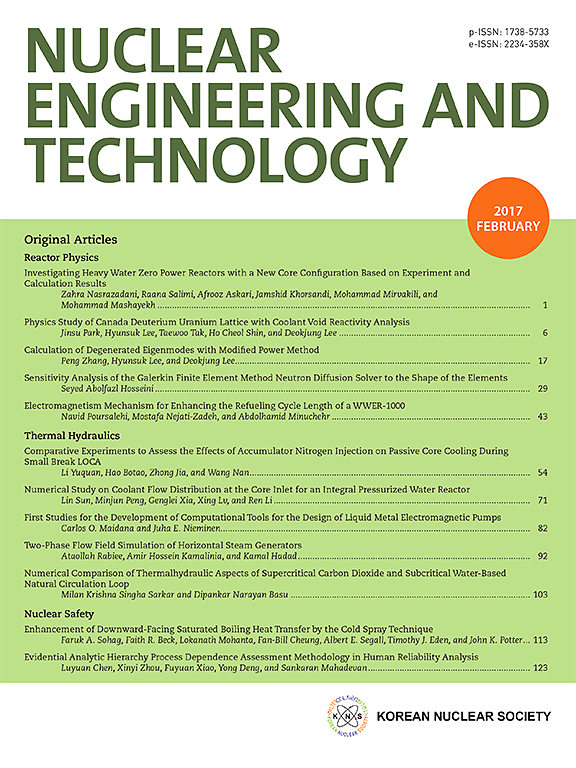An improved two-temperature method for computing the temperature distributions within a TRISO-coated particle pebble fuel
IF 2.6
3区 工程技术
Q1 NUCLEAR SCIENCE & TECHNOLOGY
引用次数: 0
Abstract
With the world’s first pebble-bed modular high-temperature gas-cooled reactor beginning commercial operation in China, the tristructural-isotropic (TRISO) coated particle pebble fuel technology has garnered significant research interest and widespread attention. In light of the fact that temperature gradients within a pebble fuel may span several hundred degrees Celsius, it becomes imperative to attain a more precise and rapid determination of the internal temperature distribution. This work first developed an Improved Two-temperature Method (ITM) based on the analogous nature of heat and neutron diffusion processes, with deriving equations for three parameters , , and , to achieve higher accuracy and wider application range. Then, seven tests were implemented for validating the ITM through comparing with finite element method, which can be considered identical with the analytic solution. Results show that the ITM can provide very accurate predictions of the peak temperature of both the fuel particles and the matrix. Finally, analysis of the influences of packing fraction and particle diameter on the temperature distribution within a pebble fuel, has been investigated, and it was found that there are two competing mechanisms resulting in the optimized design occurs at the packing fraction of 0.05, and the smallest particle diameter of 0.2 mm. The developed ITM and findings in this work provide tools and thermal conditions for analyzing fission gas release, creep rate, and other performance metrics of the pebble fuel.
求助全文
约1分钟内获得全文
求助全文
来源期刊

Nuclear Engineering and Technology
工程技术-核科学技术
CiteScore
4.80
自引率
7.40%
发文量
431
审稿时长
3.5 months
期刊介绍:
Nuclear Engineering and Technology (NET), an international journal of the Korean Nuclear Society (KNS), publishes peer-reviewed papers on original research, ideas and developments in all areas of the field of nuclear science and technology. NET bimonthly publishes original articles, reviews, and technical notes. The journal is listed in the Science Citation Index Expanded (SCIE) of Thomson Reuters.
NET covers all fields for peaceful utilization of nuclear energy and radiation as follows:
1) Reactor Physics
2) Thermal Hydraulics
3) Nuclear Safety
4) Nuclear I&C
5) Nuclear Physics, Fusion, and Laser Technology
6) Nuclear Fuel Cycle and Radioactive Waste Management
7) Nuclear Fuel and Reactor Materials
8) Radiation Application
9) Radiation Protection
10) Nuclear Structural Analysis and Plant Management & Maintenance
11) Nuclear Policy, Economics, and Human Resource Development
 求助内容:
求助内容: 应助结果提醒方式:
应助结果提醒方式:


